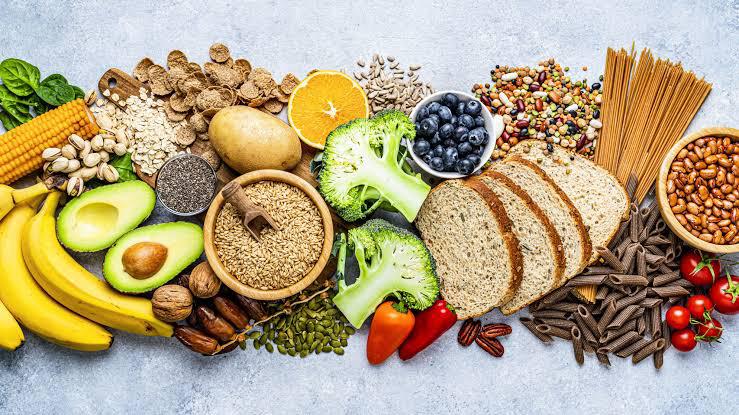Fiber for Women: Benefits, How Much You Need & Foods

Wondering if you’re getting enough fiber? Fiber supports heart health, aids digestion, and helps manage diabetes and constipation. As we age, it’s common for our stomachs to become a bit more temperamental. Ever wondered why? That’s your fiber doing its job, ladies! Research from the Women and Children’s Hospital reveals that adults with a low-fiber diet are at a higher risk for digestive issues like constipation or even hemorrhoids. But here’s the question: Are you eating enough fiber? And more importantly, how much do you really need, especially as a woman?
What is Fiber, and Why is it So Important for Women?
Let’s start with the basics. Fiber is a unique type of carbohydrate that the body cannot absorb. Unlike other digestible carbohydrates that break down into sugars, fiber remains intact as it passes through the digestive system. This essential nutrient is primarily found in plant-based foods and plays a vital role in supporting digestive health.
A wealth of research suggests that consuming a diet high in fiber, commonly known as roughage, is associated with a decreased likelihood of developing heart disease, stroke, type 2 diabetes, and bowel cancer.
There are two types of fiber: soluble and insoluble, both of which serve essential functions in maintaining overall health.
- Soluble fiber: This type of fiber dissolves in water to form a gel-like substance in the digestive tract. It is particularly effective in lowering cholesterol levels by binding to cholesterol in the intestines, which prevents its absorption into the bloodstream. This process can lead to reduced levels of LDL (low-density lipoprotein) cholesterol, often referred to as “bad” cholesterol, thereby lowering the risk of heart disease. Additionally, soluble fiber helps regulate blood sugar levels, which is essential for preventing diabetes and related cardiovascular issues. Foods rich in soluble fiber include oats, beans, lentils, fruits (such as apples and citrus), and some vegetables.
- Insoluble fiber: Whereas insoluble fiber is not like soluble, it cannot dissolve in water. Instead, it adds bulk to the stool and promotes regular bowel movements, which is essential for digestive health. By facilitating the passage of food through the digestive tract, insoluble fiber helps prevent constipation and supports a healthy gut. This type of fiber also plays a role in heart health by contributing to weight management; a diet high in fiber can help individuals feel fuller for longer, reducing overall calorie intake. Whole grains, nuts, seeds, and the skins of fruits and vegetables are a few examples of insoluble fiber.
Incorporating both soluble and insoluble fiber into your diet is essential for heart health, digestion, and reducing the risk of chronic diseases. A balanced intake of fiber-rich foods can improve cholesterol levels, better regulate blood sugar, and support overall well-being. Additionally, fiber helps promote satiety, aid digestion, and relieve constipation.
How Much Fiber Do You Really Need?
According to the Dietary Guidelines for Americans:
| Group | Age | Recommended Daily Fiber Intake |
|---|---|---|
| Kids | 1-3 years | 19 grams |
| 4-8 years | 25 grams | |
| 9-13 years | 26-31 grams | |
| Women | 19-50 years | 25 grams |
| Over 50 | 21 grams | |
| Men | 19-50 years | 38 grams |
| Over 50 | 30 grams |
Benefits of Fiber
For women, fiber is essential. Beyond helping to maintain healthy digestion, fiber offers a range of benefits that are crucial for long-term wellness:
- Digestive Health: Fiber is the cornerstone of good digestion. It helps keep things moving in your digestive tract and prevents the discomfort of constipation, a problem many women face as they age. Insoluble fiber, in particular, adds bulk to stools and helps prevent bloating and gas, creating smoother, more regular bowel movements.
- Weight Management: Women often struggle with weight as their metabolism changes. Fiber-rich foods are often low in calories but high in volume, meaning they fill you up without overloading you with extra calories. This helps to prevent overeating and supports weight loss or maintenance efforts. Plus, fiber helps slow digestion, keeping you feeling fuller for longer.
- Heart Health: Dietary fiber, particularly soluble fiber, helps lower LDL (“bad”) cholesterol levels by binding to cholesterol particles in the digestive system and removing them from the body. This can significantly reduce the risk of heart disease, which is a leading concern for women as they age.
- Blood Sugar Control: Fiber slows the absorption of sugar into the bloodstream, which can help prevent spikes in blood sugar levels. This is especially important for women who are at risk for type 2 diabetes, a condition that disproportionately affects women, especially those over 45 or those with a family history.
- Gut Health: A healthy gut is essential for overall well-being. Fiber acts as food for beneficial gut bacteria, helping to keep your microbiome in balance. A balanced gut microbiome is linked to everything from mood regulation to immune system function, making fiber a key player in holistic health.
- Cancer Prevention: There’s growing evidence that a high-fiber diet may reduce the risk of certain cancers, particularly colorectal cancer. Fiber’s protective role comes from its ability to promote regular bowel movements and reduce the time harmful substances spend in the colon.
Easy Ways to Increase Your Fiber Intake
Here are some simple ways to increase your fiber intake throughout the day:
- Start your day with a high-fiber breakfast: Choose Chia Seed Pudding, plain Scrambled Tofu with Veggies & Whole-Grain Toast, or oatmeal, as oats are a great source of fiber.
- Switch to whole grains: Go for wholemeal or granary bread instead of white bread, and try whole wheat pasta, brown rice, or bulgur wheat.
- Eat potatoes with skins on: Choose baked or boiled new potatoes with their skins for a fiber boost. Always wash or peel skins before consuming.
- Add beans and lentils to meals: Add pulses like beans, lentils, or chickpeas into stews, curries, or salads.
- Eat more veggies and fruits: Try to include plenty of vegetables in your meals, either as side dishes or mixed into sauces, stews, or curries. For fruit, aim for 2-3 servings a day, like adding a banana to your cereal or mixing sliced fruit into your salad or yogurt.
- Enjoy fruit for dessert: Fresh or dried fruit (in natural juice) makes a great dessert.
- Seeds: Incorporate fiber-rich seeds into your diet by sprinkling them on yogurt, cereal, or salads.
- Snack smart: Reach for fiber-rich snacks like fresh fruit, vegetable sticks, rye crackers, oatcakes, or unsalted nuts and seeds.
Tip: It’s completely normal to experience bloating and flatulence when you first increase your fiber intake. It may take about one to two weeks for your body to adjust, and then you can gradually increase your fiber consumption.
What’s Considered High or Low in Fiber?
- High in fiber: 6g or more per 100g
- Low in fiber: Less than 3g per 100g
If you’d like an article on high-fiber foods, leave a comment below. This blog has helped you understand the importance of fiber. Let us know, are you getting enough in your diet?
Wrapping Up
Ensuring you’re getting enough fiber is a crucial step towards a healthier, more energetic lifestyle, and it doesn’t have to be complicated.
Are you worried? Don’t be; we’ve got you covered with nutritious salad recipes and easy meal ideas that save you time while also helping you make the most of your resources. Plus, we offer tools like calculators to track your fiber intake effortlessly.
Visit our website now and grab your copy of the high-protein snacks to lose fat and gain muscle mass at a price that won’t break the bank! Let’s make this the start of your journey to better health. Empower yourself today; your fiber boost is just a click away.

